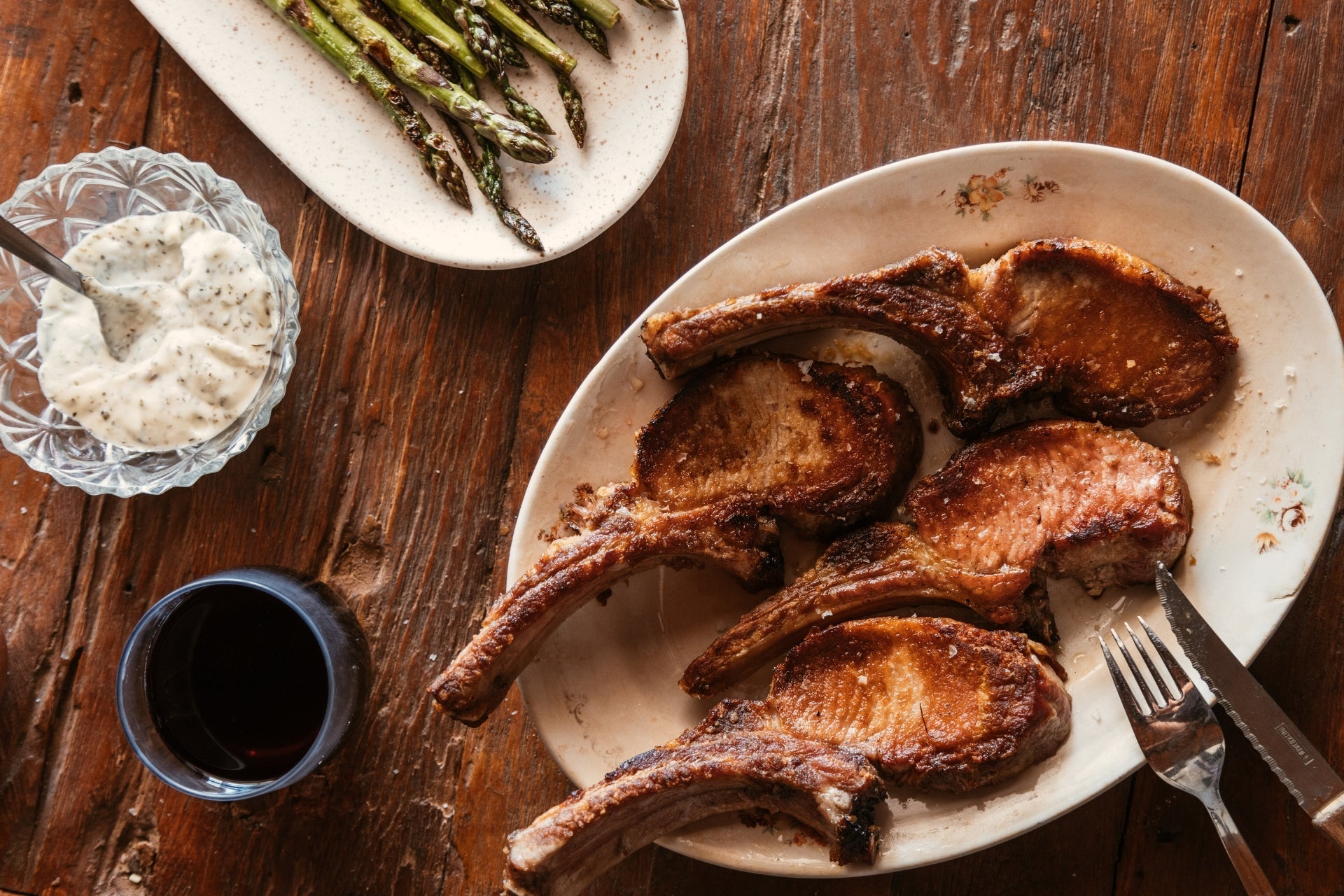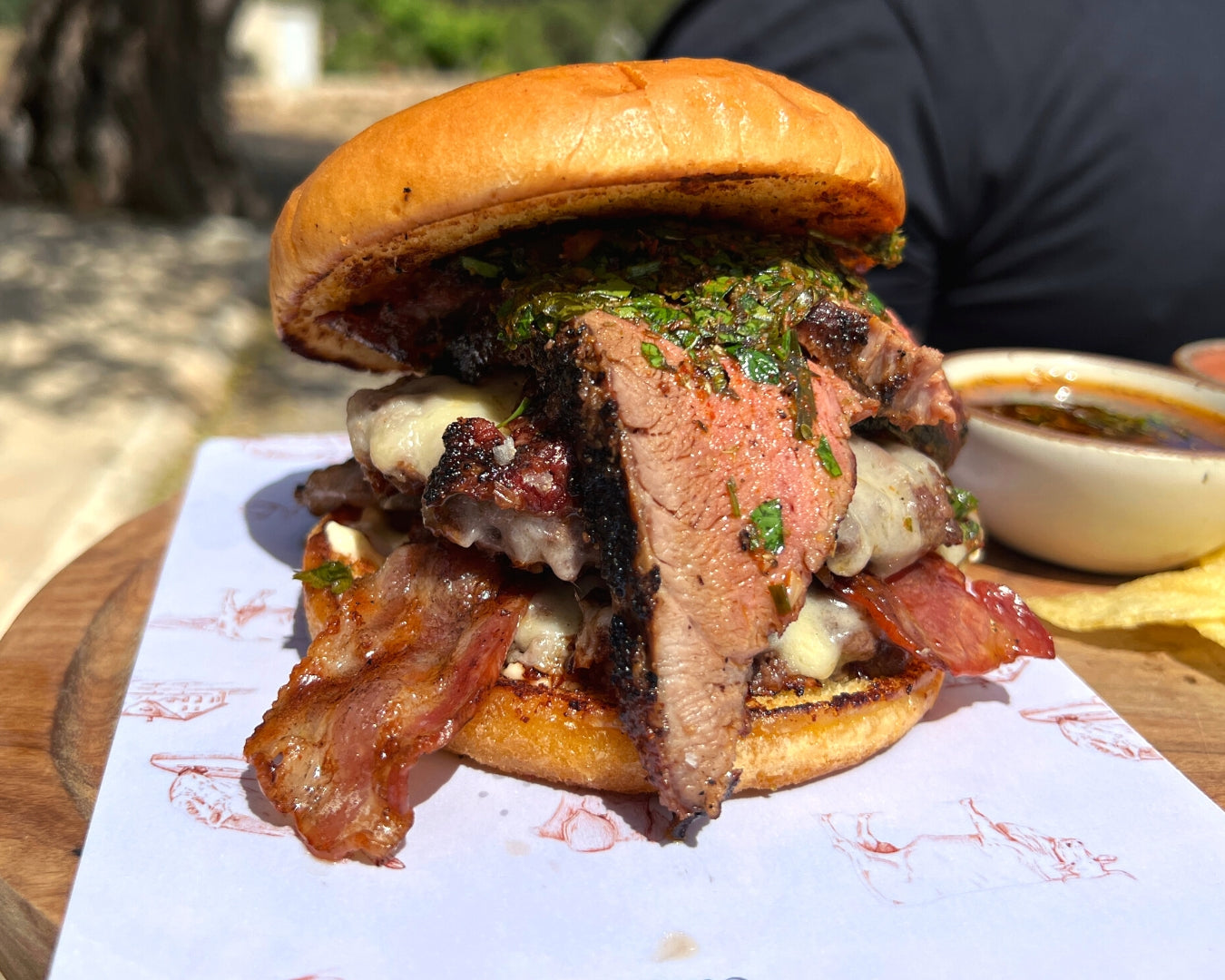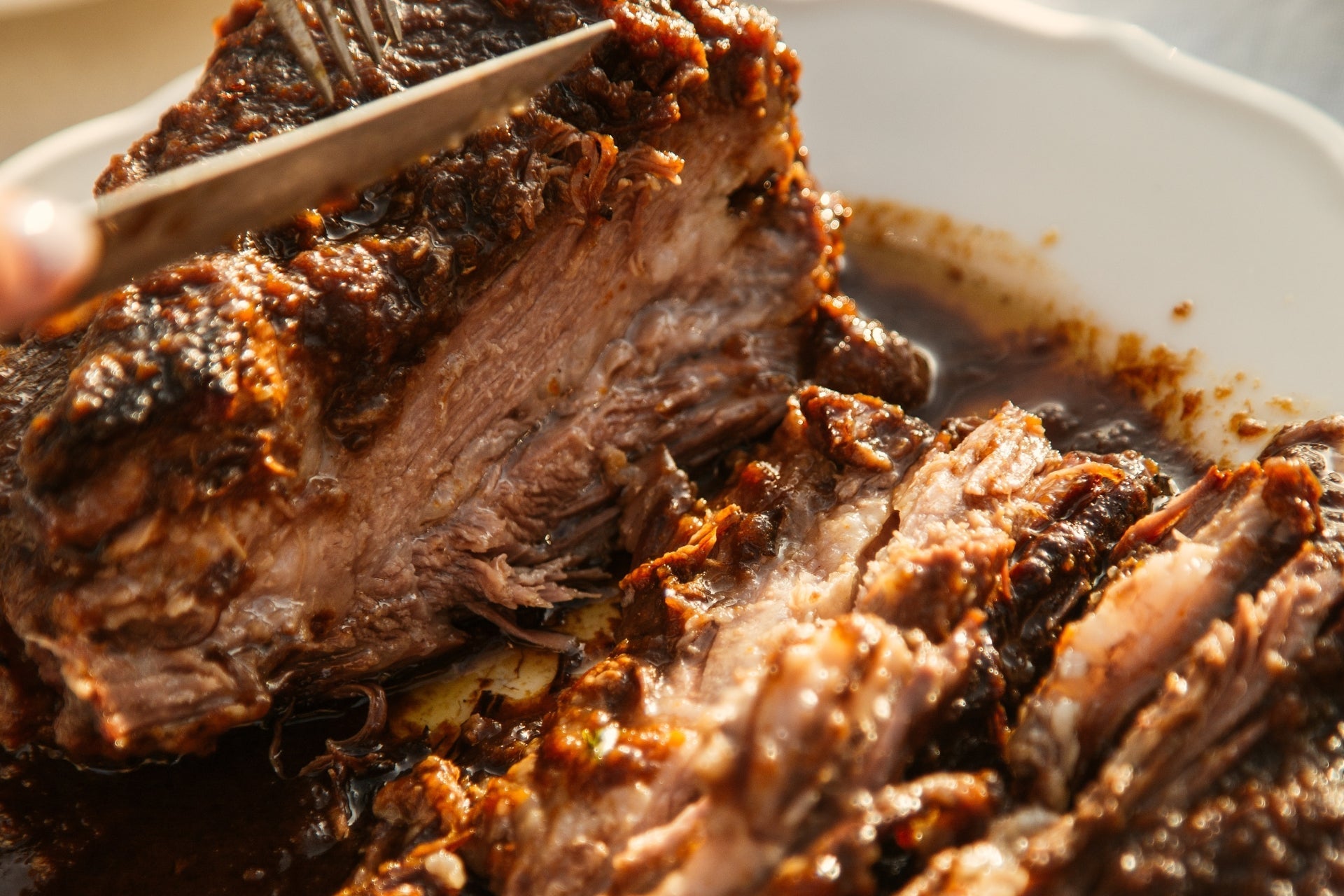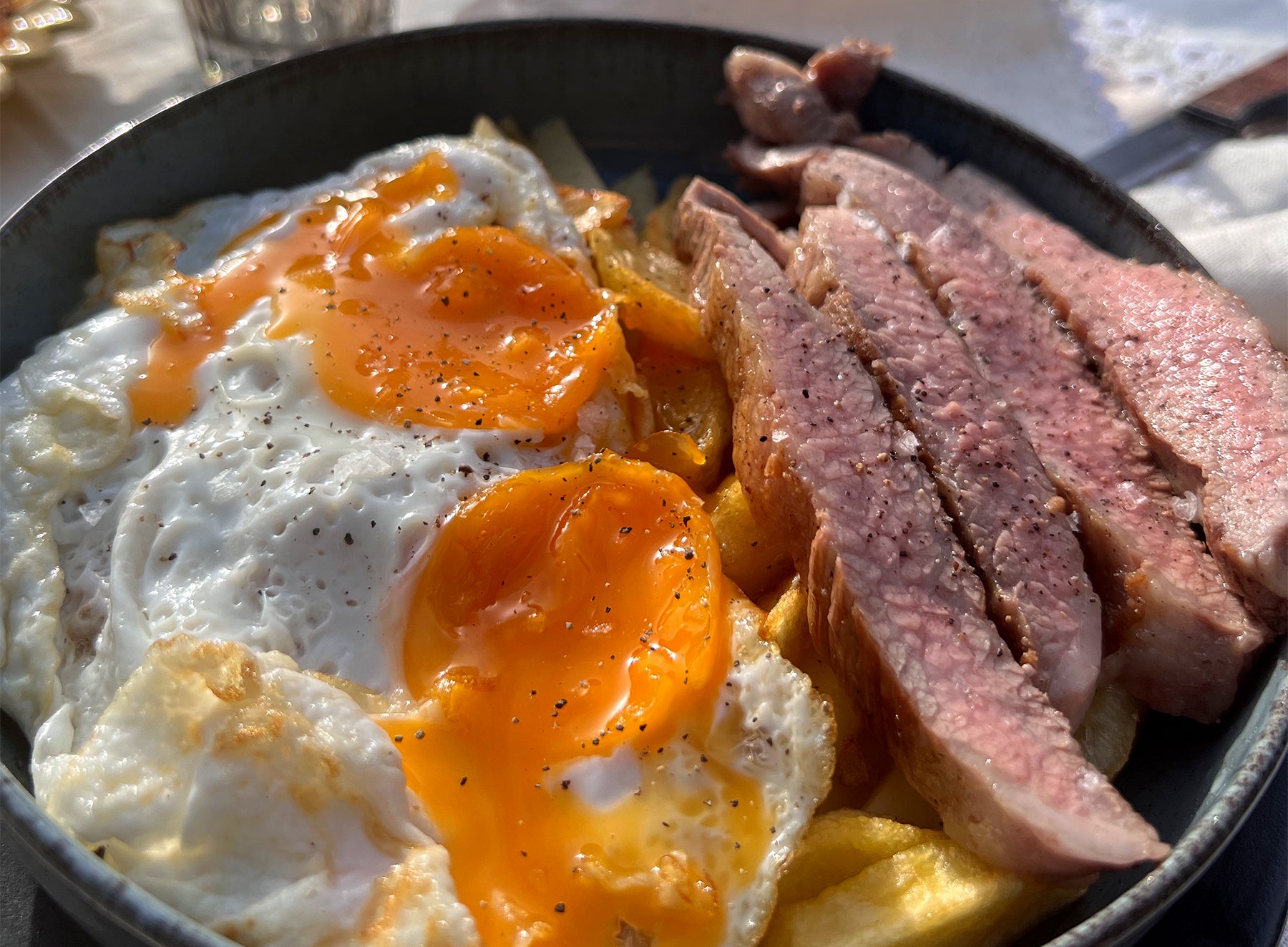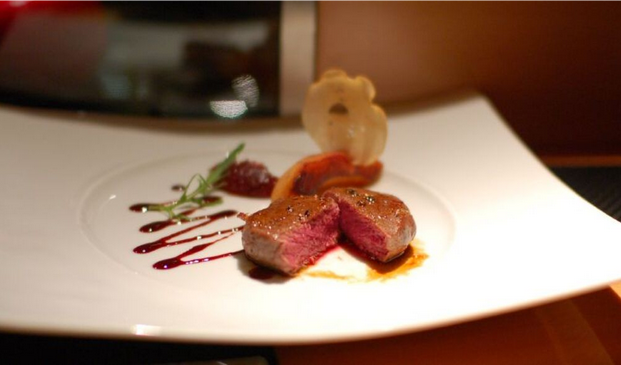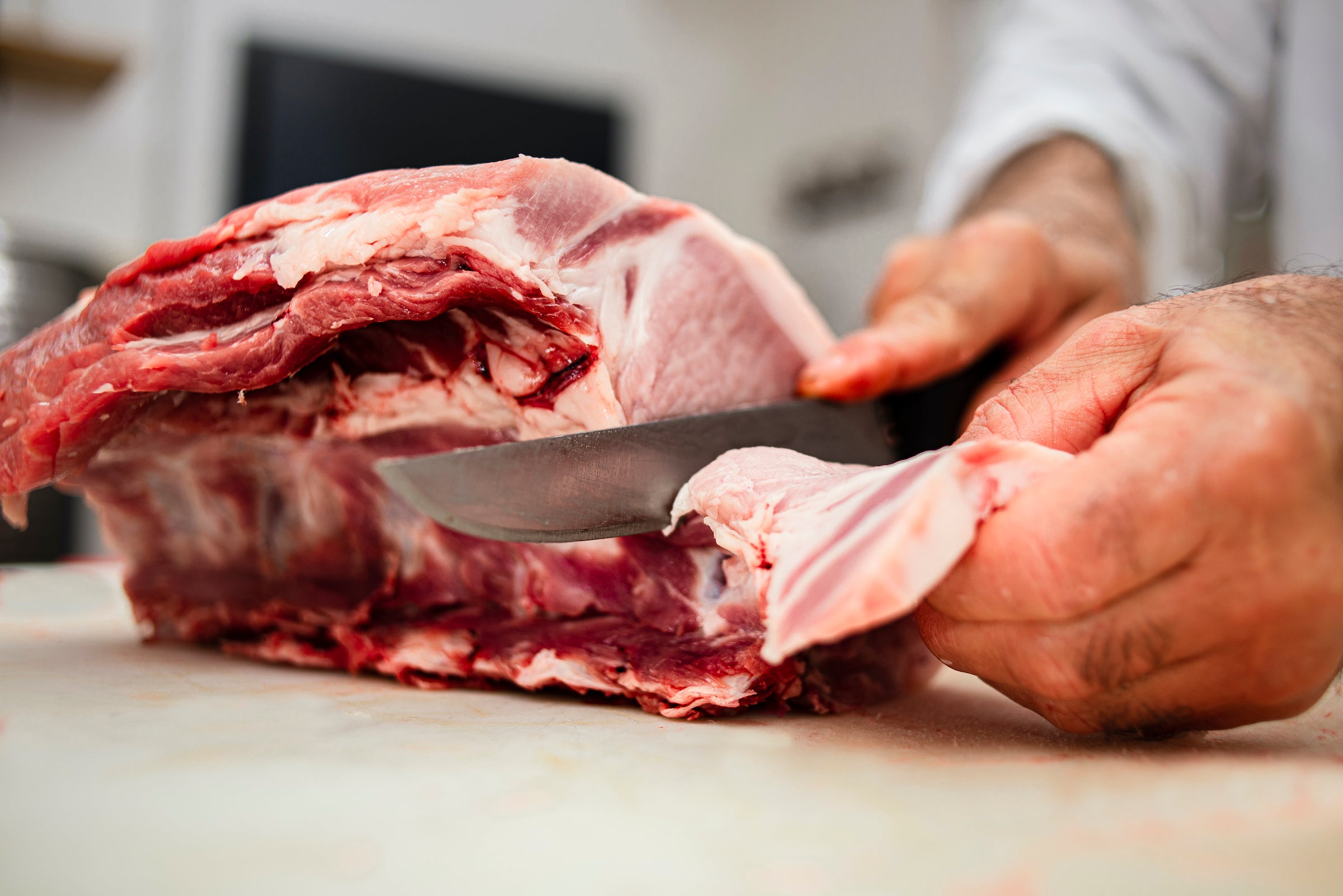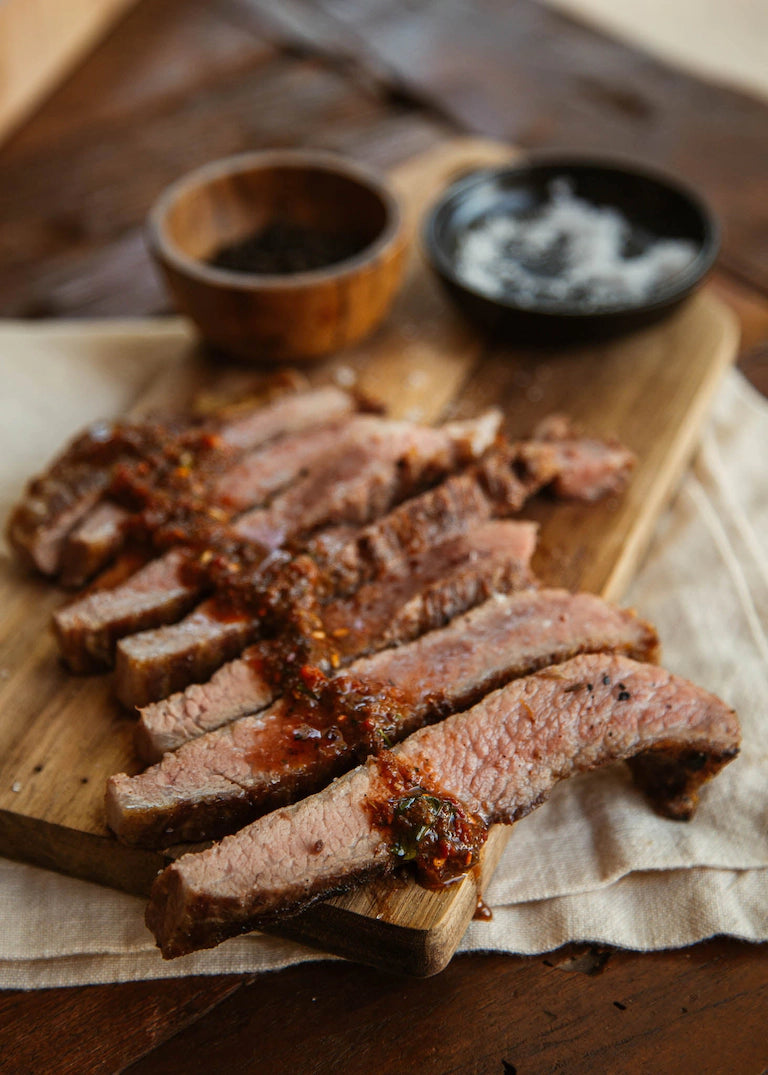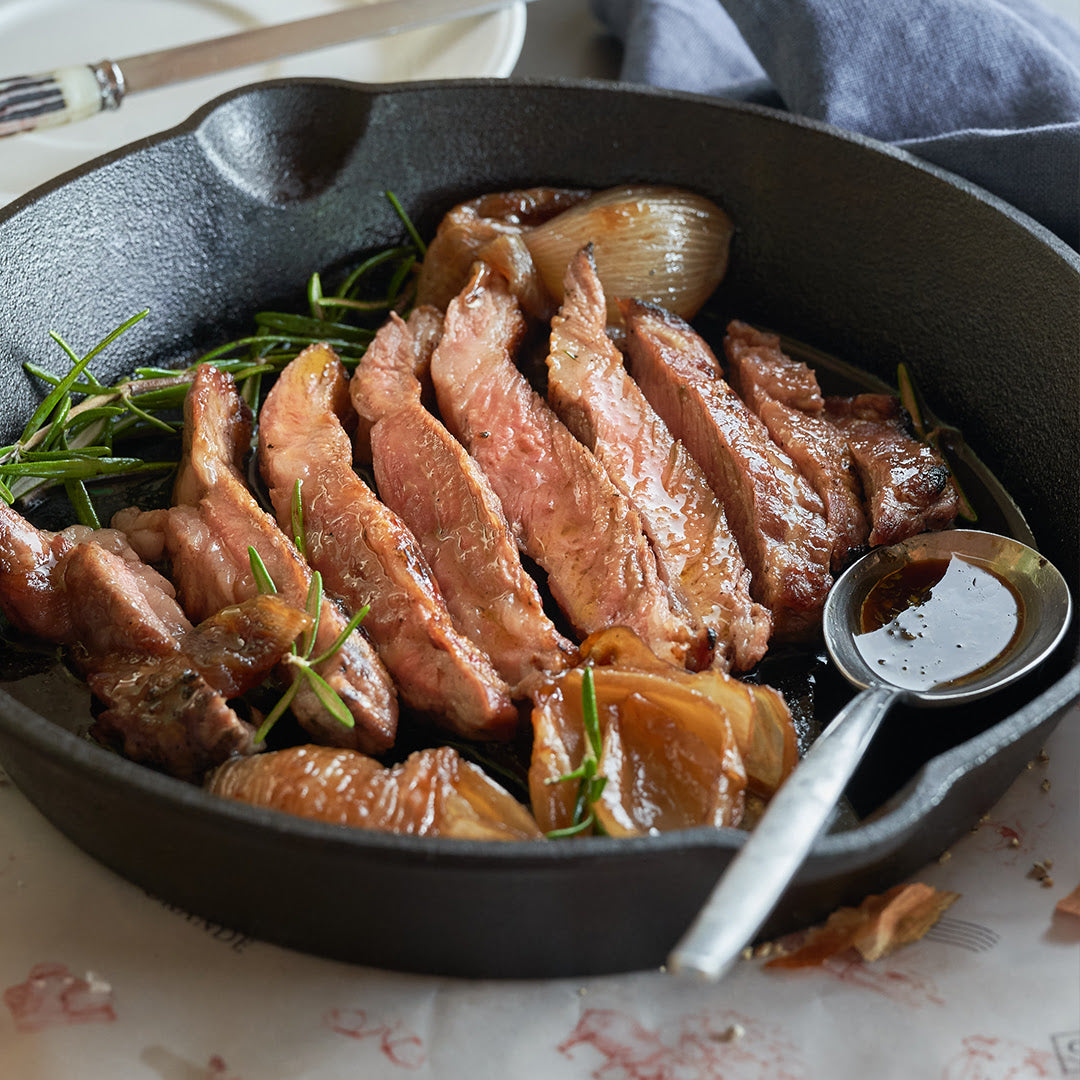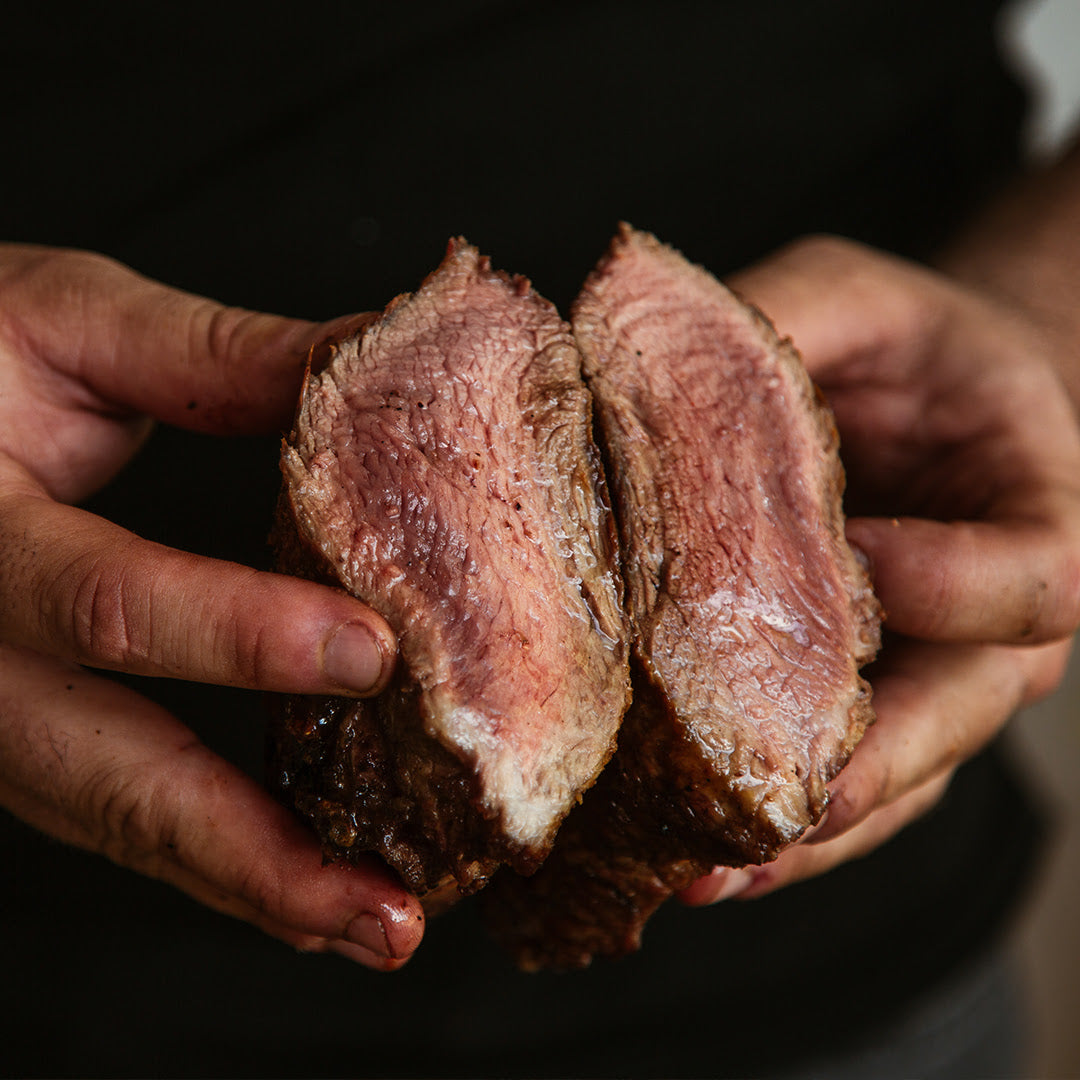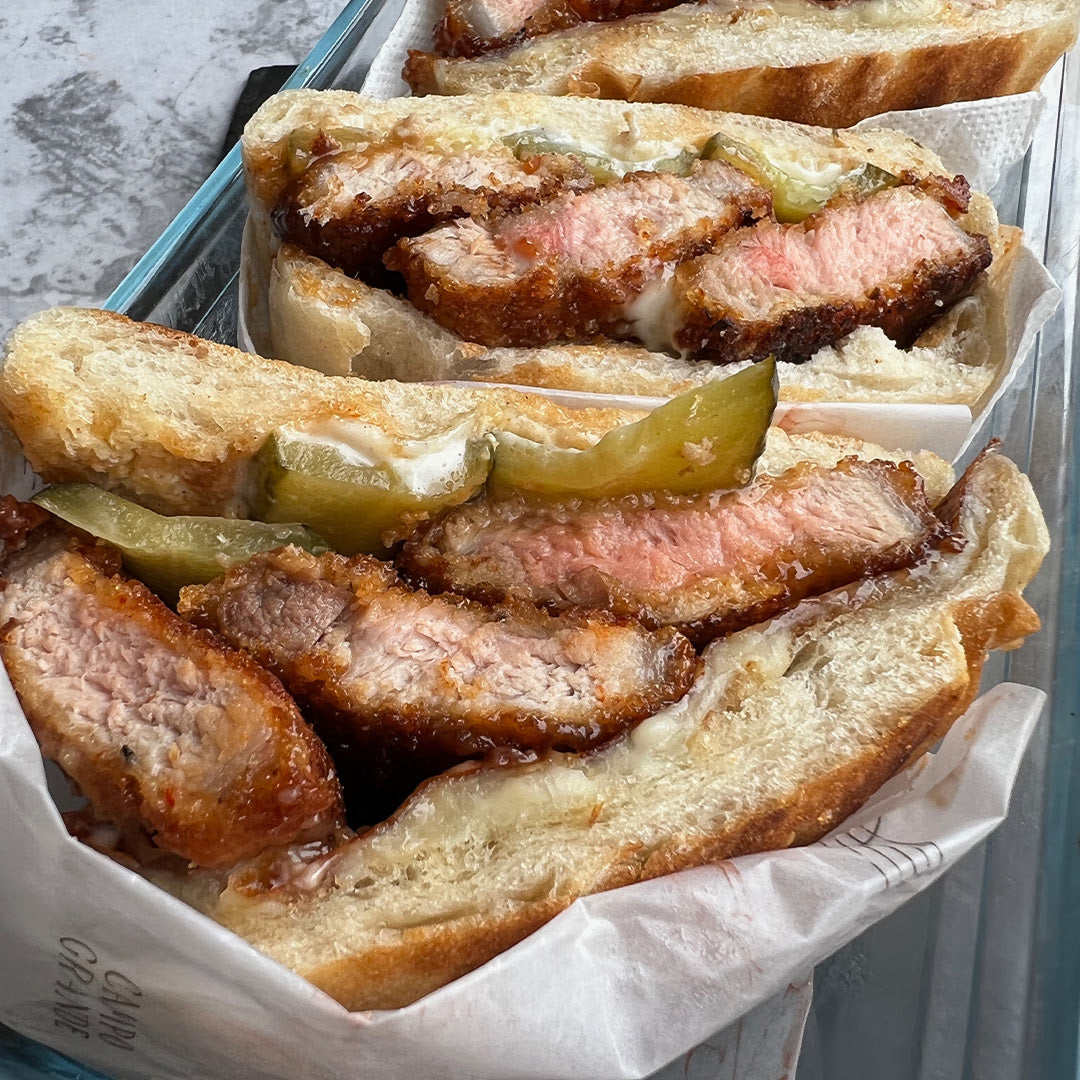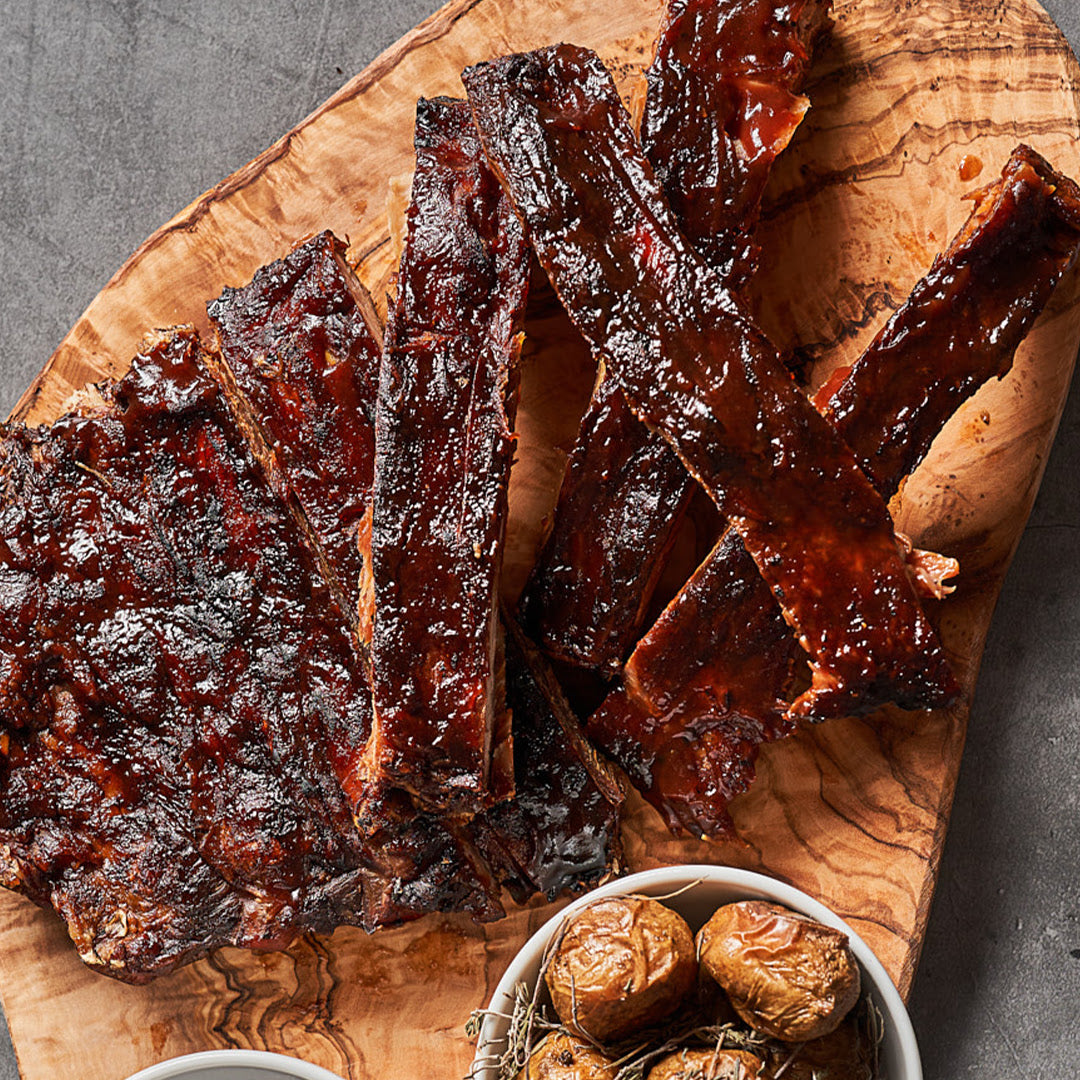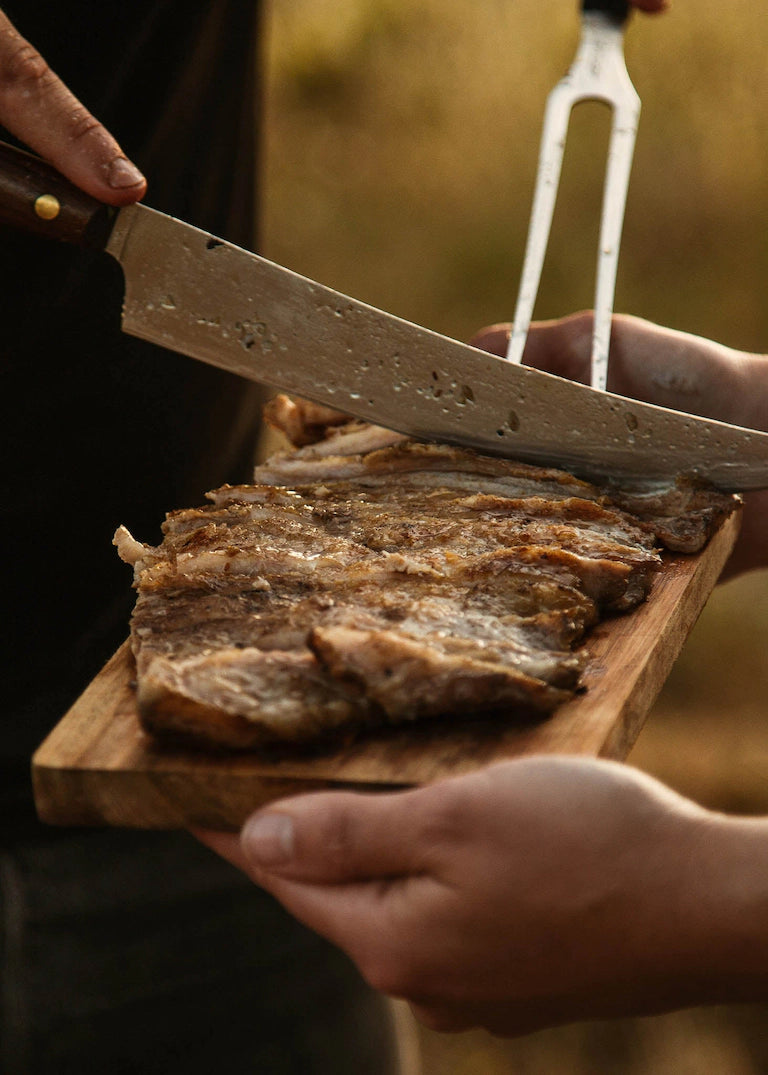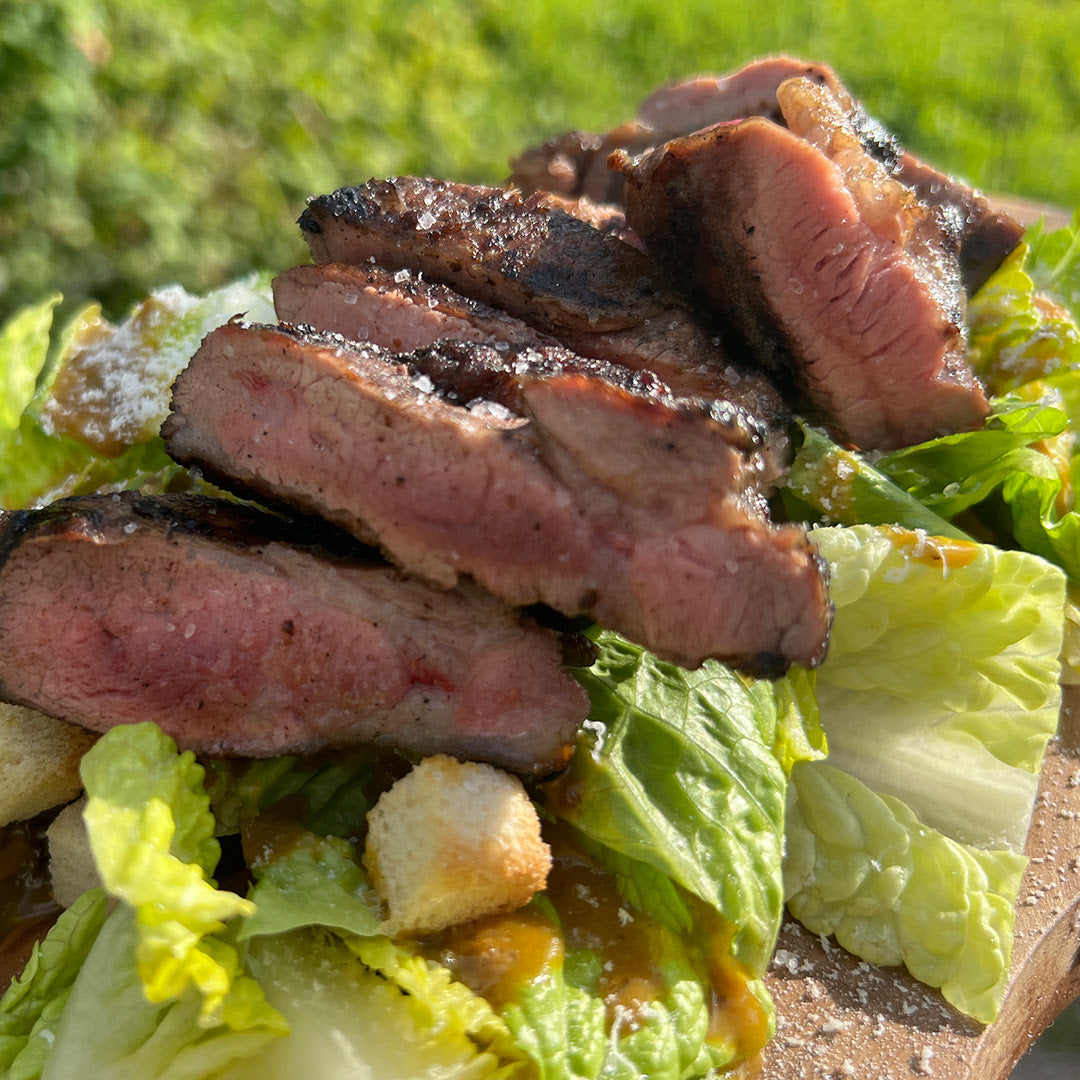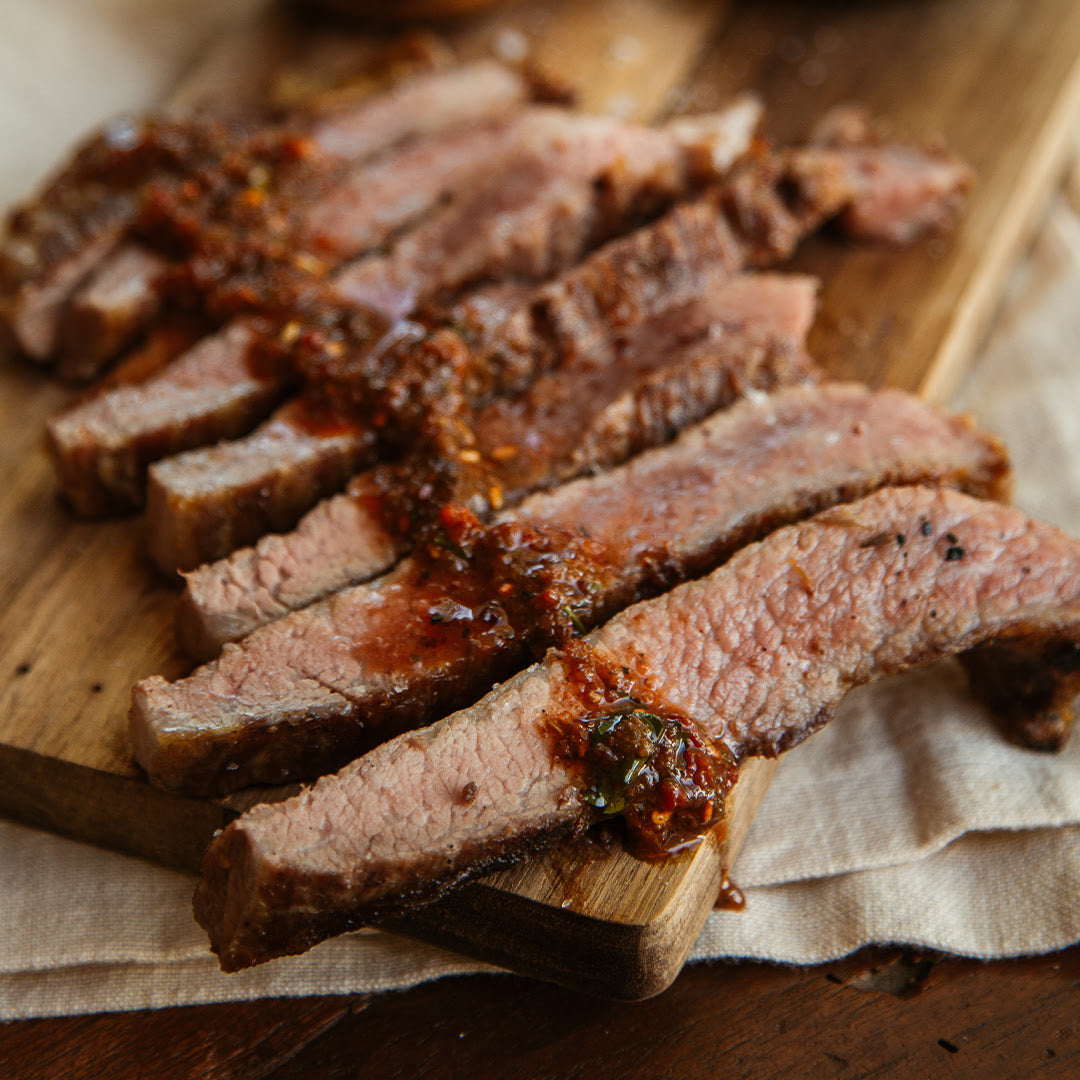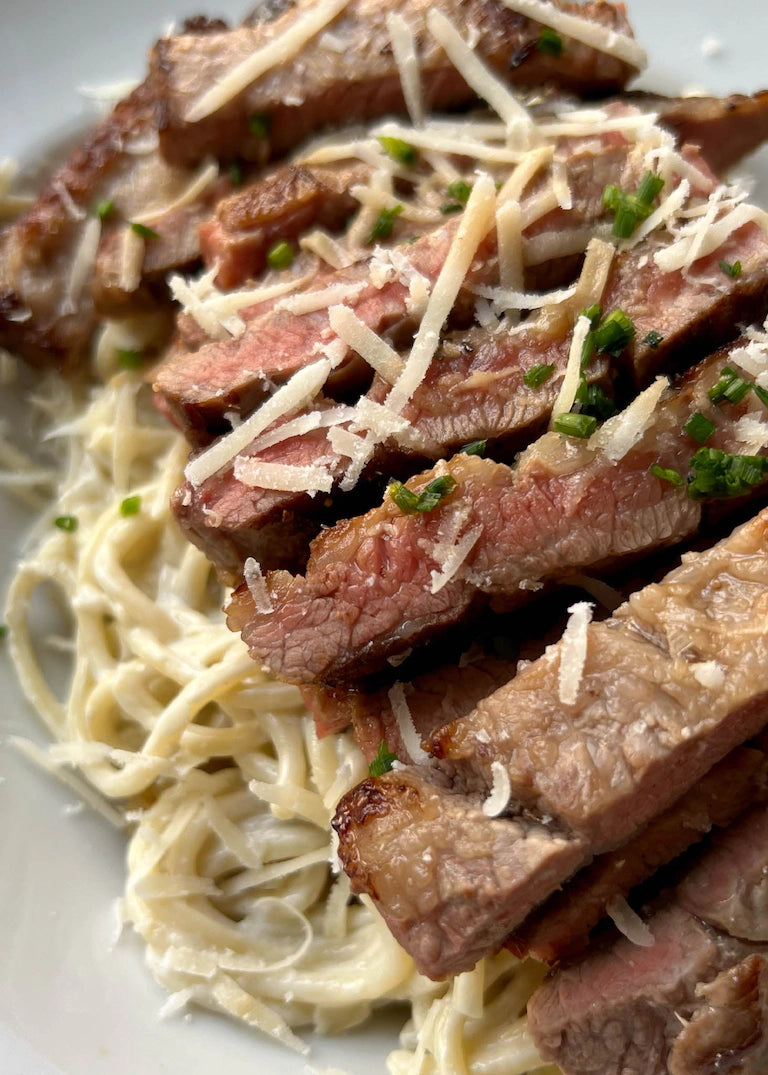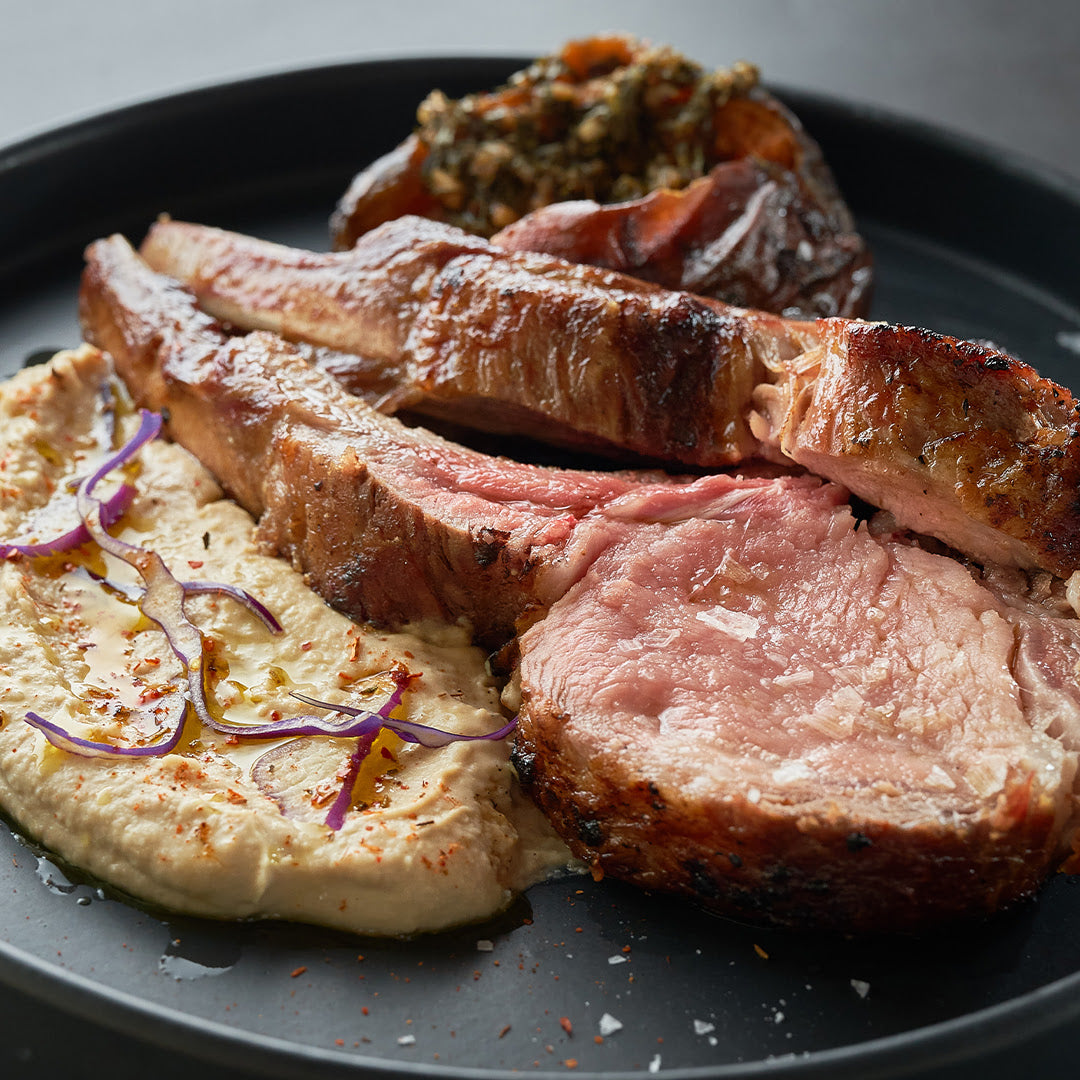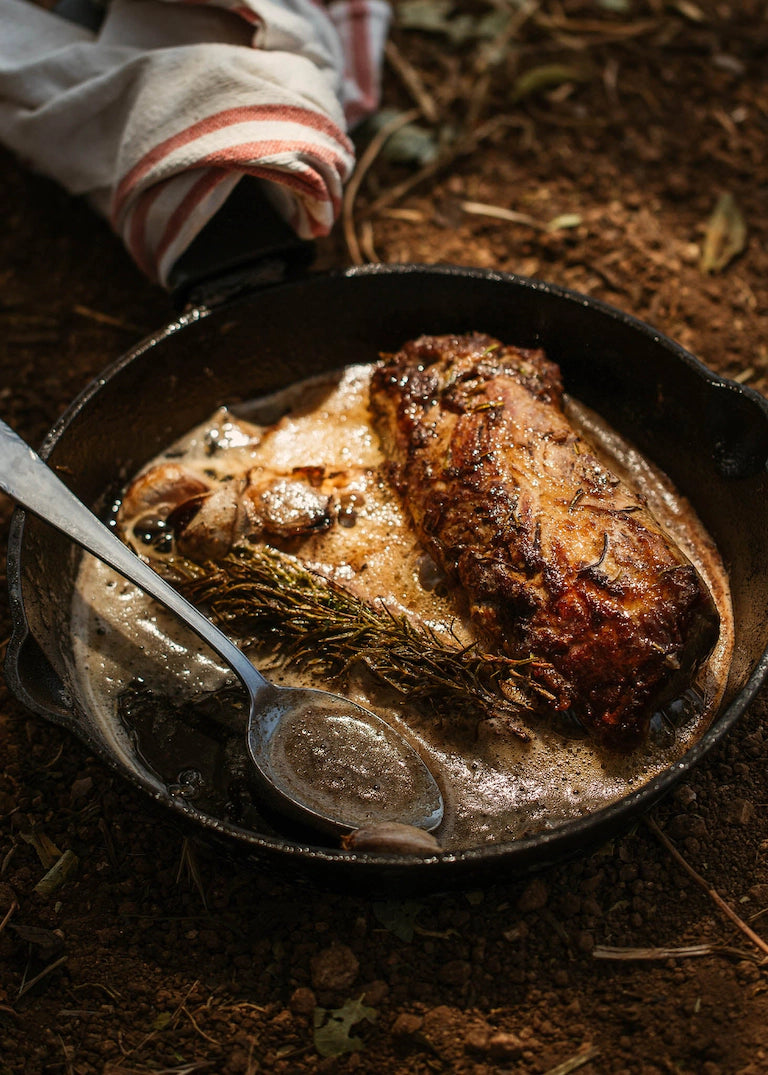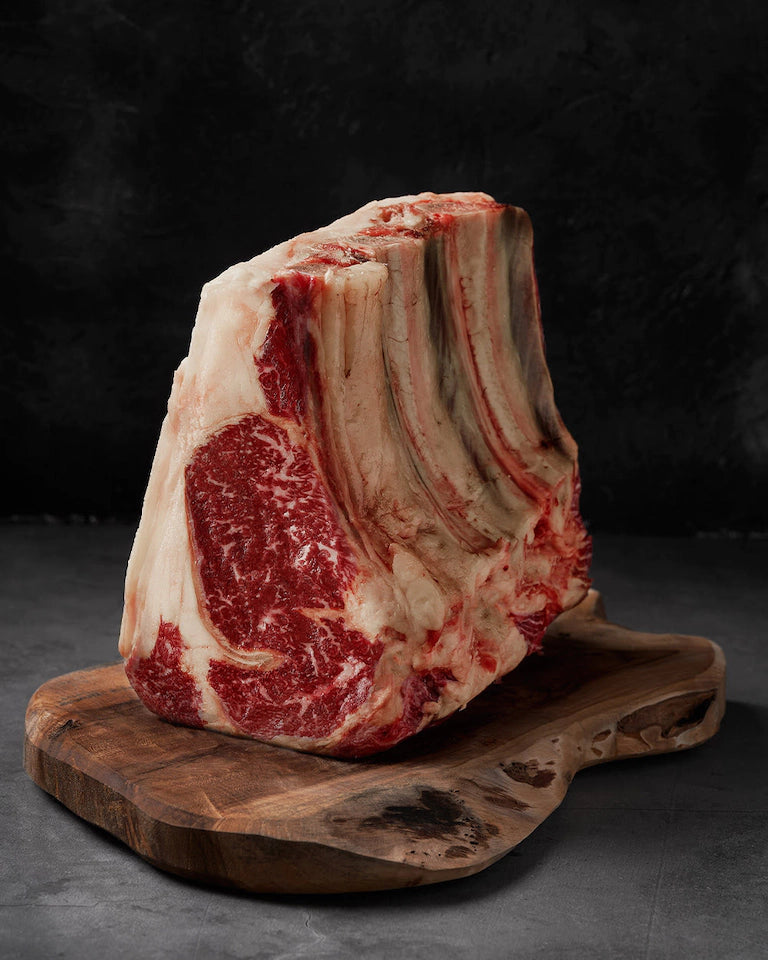
Ibérico is a very special type of pork—a true cut above the rest.
Ibérico is very distinct from other cuts of pork. Iberian pigs are raised differently and fed differently. Visually, the pigs look different and the meat itself looks different from traditional pork. It also has a different taste and a totally different texture. In other words, Ibérico is in a pork league of its own.
What is Ibérico pork?
Ibérico pork comes from rare breed of pigs, called Ibérico, that are quite special. When it’s raw, the meat is a bright red color and almost looks like beef.
The flavor is incredibly complex, sharing both qualities of beef and pork across a wide variety of cuts. It’s got an intensely sweet and almost floral flavor profile, but it’s also nutty and earthy. It's nuanced and umami, reminiscent of bold salty cheeses like parmesan.
The fat contributes significantly to this unique flavor. Ibérico is a lean meat, but has incredible marbling in the muscle fibers and loads of intramuscular fat. This is a sure sign of the quality of the pork. That marbling makes an otherwise tough meat incredibly soft and melt-in-your-mouth tender.
What makes Ibérico pork so special?
When you get down to it, the real difference in Iberico is the fat. These pigs are fed a diet heavy in acorns. Couple that with natural genetics, and the Iberian pigs are able to get a ton of marbling and fat into their muscles. This leads to a significantly more flavorful pork.
This fat isn’t your ordinary run-of-the-mill fat, either. A large portion of it is unsaturated oleic fat, which is the same type of fat found in olive oil. This fat is a major part of the Mediterranean diet, and is said to improve heart health and reduce cholesterol.
What makes Iberian pigs so special?
While a large part of what makes these pigs so special is their genetics, what sets them apart is the way they’re raised. They have a completely different lifestyle than the usual farm pigs we are familiar with.
Iberian pigs are raised in open areas, and are free to run over hills and tromp through the woods. All this physical activity encourages the fat from their acorn diet to infuse into their muscles.
These pigs are free to graze naturally during the spring and summer. Their main diet will consist of grass, mushrooms, bugs, and wild herbs. From October to around March, the oak trees in savanna grasslands start to drop their acorns, and the Ibérico pigs begin their feast. This lifestyle and acorn diet plays an important role in the flavor and texture of the meat.
Why is Ibérico pork so expensive?
Well, the reason is because this pork comes from a very unique breed of pig only found in Spain. They have a very special diet, and the farmers are required to have certifications that guarantee quality and authenticity.
Ibérico is highly sought after for these reasons. It comes down to simple supply and demand. There’s more people who want Ibérico than there is Ibérico, thus, it’s scarce - driving up the value. To read more on the value of Ibérico, check out this fascinating article.
What are the different Ibérico cuts?
The Ibérico pig has so many different cuts. Here are a few of the stars you should try out:
- Ibérico Pluma - This is a special cut taken from the lower end of the loins. It’s the pork equivalent of an ultra-tender flank steak, and it’s quite delicate. It gets its name from the pointed ends, as “pluma” means feather in Spanish
- Ibérico Solomillo - This is the tenderloin, which is an incredibly succulent and tender piece of meat. It comes from an unused muscle, which is why it is so soft.
- Ibérico Secreto - A sneaky little cut known as Spain’s greatest kept secret. The Secreto is a cut from the shoulder and is hidden between layers of flavorful fat.
Types of Cured Ibérico Ham
Ibérico pork can be eaten fresh, but it is often cured using nothing but salt, spices and time. The most important cured Ibérico cut is the jamón, or the ham. And there are different styles of ham, each with their own distinctions and requirements.
- Black label Iberian pigs are fed a complete diet of acorn. They're called “Pata Negra” or black hoof. It’s the highest quality and considered 100% Ibérico.
- Jamon Ibérico de Bellota is the second tier. It’s technically 100% Ibérico as well, as the pig are fed nothing but acorns too. However, they’re considered red label pigs because they’re a cross-breed of black Iberian pigs with a more common breed.
- Green label pigs are fed a mixture of acorns and grains.
- White label pigs are the lowest quality, and are fed only grain, and are also not free-range.
The Power of Pork
While there are many differences between Spaniards and Americans, one thing we all have in common is a powerful love of pork. Ibérico pigs are raised ethically and sustainably, and as a result we have all been gifted the special flavors of their delicious bounty that we can enjoy all over the world.
